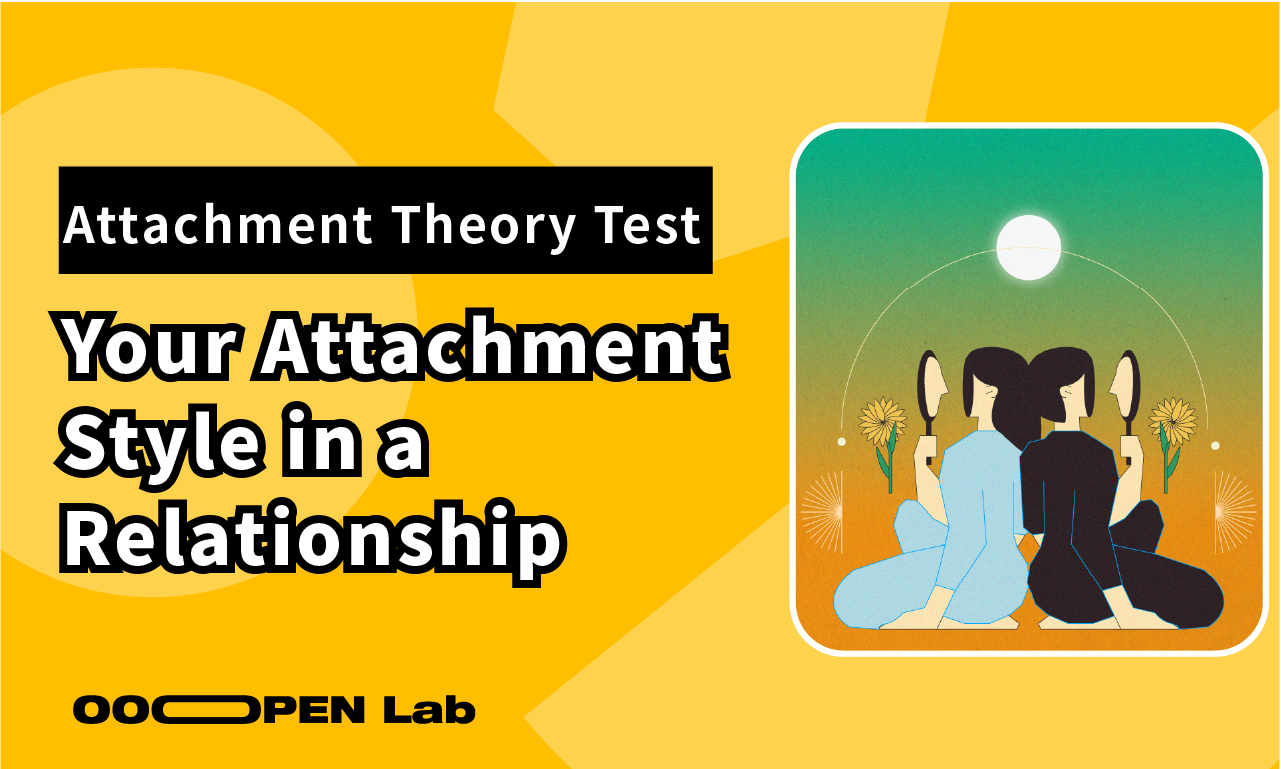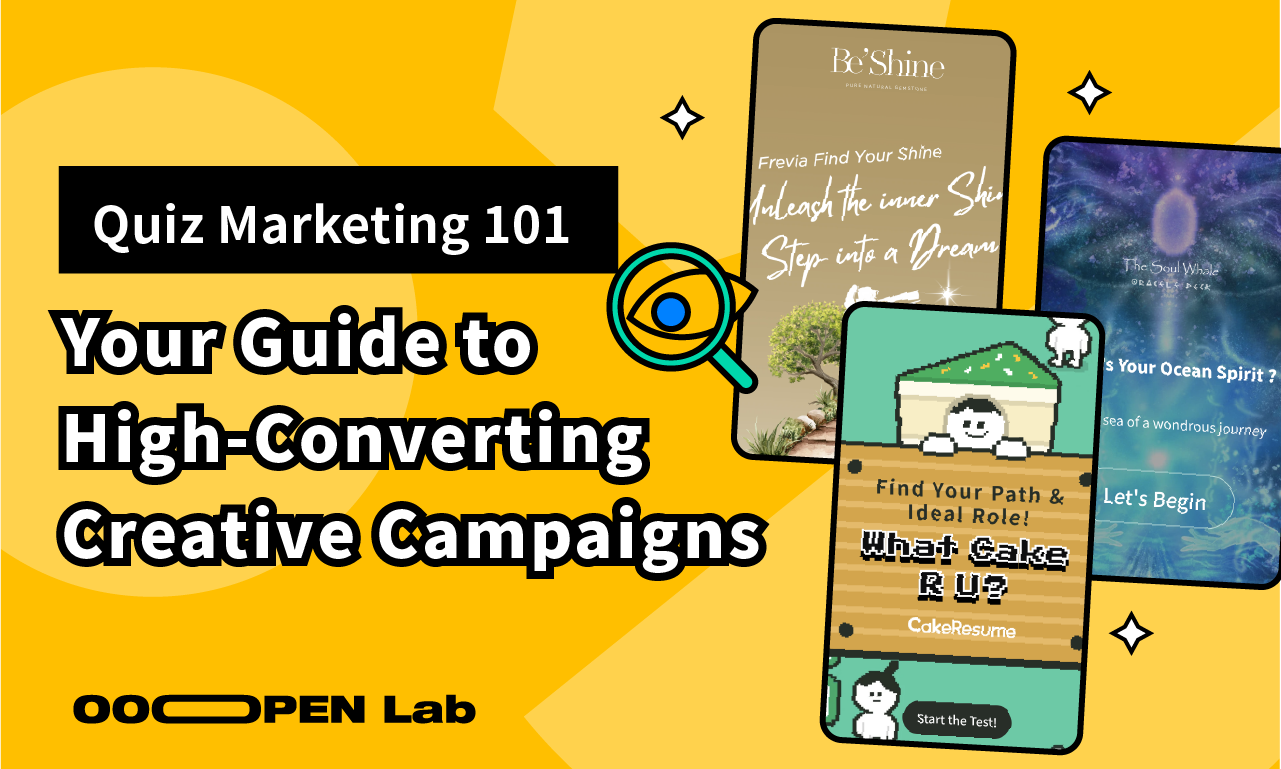Click to read the article: What Is Attachment Theory? How Does It Influence Our Relationships with Others?
- When Your Partner Has a Secure Attachment Style
- When Your Partner Has an Anxious Attachment Style
- When Your Partner Has an Avoidant Attachment Style
- When Your Partner Has a Disorganized Attachment Style
“Attachment theory is a way of conceptualizing the propensity of human beings to make strong affectional bonds to particular others and of explaining the many forms of emotional distress and personality disturbance, including anxiety, anger, depression, and emotional detachment, to which unwilling separation and loss give rise.”
Bowlby, J. (1977). The making and breaking of affectional bonds. The British Journal of Psychiatry, 130(3), 201-210. (Specifically p. 201)
If Your Partner Is…
I Have a Secure Attachment Style
Secure Attachment
Congratulations! Both of you have a secure attachment style, which means you trust in the possibility of having a close and reliable relationship. You are both capable of expressing your needs, empathizing with each other, communicating effectively, and resolving conflicts in a healthy manner.
Make good use of these strengths to nurture your relationship. While differences and external factors may still lead to friction or conflict, try to maintain the mindset that your partner is a trustworthy teammate. Face these challenges together with unity, and believe in your ability to build a fulfilling and happy relationship.
Anxious Attachment
For the anxiously attached partner:
Congratulations on finding a securely attached partner! According to attachment theory, they are unlikely to abandon you or become overwhelmed by your emotions. What you need to practice is trusting the resilience of your relationship. Take time to organize your thoughts and needs, and express them in a calm and gentle manner so your partner has the opportunity to truly understand your feelings.
Your partner may not always meet your needs in the exact way you envision, as they have their own values and limitations. However, try not to fixate on the ideal way of receiving love. Instead, practice appreciating and embracing the way your partner expresses their love. Over time, you will start to feel the deep and lasting happiness you desire.
For the securely attached partner:
Your partner has an anxious attachment style, which means they may appear more anxious or irritable during times of stress, before or after their menstrual cycle, or when facing uncertainty in the relationship. However, as long as you remain steady and present, they will gradually feel more secure and calm.
Because your partner tends to feel more insecure in relationships, their emotional reactions might sometimes seem confusing to you. In these moments, simply maintaining consistent patience and understanding will go a long way in meeting their needs. Through this process, the two of you will surely find a way to interact that suits both of you.
Avoidant Attachment
For the avoidantly attached partner:
Congratulations on finding a securely attached partner! While no one is perfect, a securely attached partner is one of the best matches for building the kind of relationship you truly desire. In this relationship, try practicing a balanced level of intimacy with your partner. You can openly communicate your needs and allow your partner the opportunity to explore and discuss the most suitable way for you both to connect.
Remember, there is no such thing as a perfect partner from the start—rather, you and your partner have the ability to grow together into soulmates through mutual effort and understanding.
For the securely attached partner:
Your partner has an avoidant attachment style, which means they may not always be overtly romantic, but they still care about the relationship in their own way. Sometimes, their affection might not be obvious, requiring your patience and keen observation. When you do recognize their ways of expressing love, try offering affirmation and appreciation to help them feel understood and valued.
It may take time for both of you to figure out the best way to connect, so be patient. Respecting their need for independence while maintaining open communication will greatly improve your ability to navigate the relationship smoothly.
Disorganized (Fearful-Avoidant) Attachment
For the disorganizedly attached partner:
Congratulations on finding a securely attached partner! While no one is perfect, a securely attached partner is one of the best choices for building the relationship you long for. Since your attachment style may involve both craving intimacy and fearing it, you and your partner may need time and patience to establish a comfortable dynamic.
Try to clearly and specifically express your needs—let your partner know what matters to you and what you desire from the relationship. This clarity will greatly enhance communication and reduce misunderstandings between you both.
For the securely attached partner:
Your partner has a disorganized (fearful-avoidant) attachment style, which means they might experience internal conflicts about closeness and intimacy. They may seek connection but also push it away due to past relational experiences. Because of this, understanding their expectations and needs in the relationship is key.
Use your strong observation skills and empathy to recognize when they feel conflicted, and encourage open discussions about both their and your expectations. The clearer your communication, the easier it will be to build a sense of trust and security in the relationship.
If Your Partner Is…
I Have an Anxious Attachment Style
Secure Attachment
For the securely attached partner:
Your partner has an anxious attachment style, which means they may become more anxious or irritable during times of stress, before or after their menstrual cycle, or when facing uncertainty in your relationship. However, as long as you remain stable and present, they will gradually regain their emotional balance.
Since your partner tends to feel insecure about the relationship, some of their emotional reactions may confuse you. In these moments, simply staying patient and understanding their needs will help you both navigate the relationship more smoothly. With time, you will develop an interaction style that works well for both of you.
For the anxiously attached partner:
Congratulations on finding a securely attached partner! According to attachment theory, your partner is unlikely to abandon you or feel overwhelmed by your emotional needs. Your main task is to trust in the resilience of your relationship. Take time to organize your thoughts and needs, and express them gently and clearly, so your partner can truly understand your feelings.
Your partner may not always meet your needs in the exact way you imagine, as they have their own perspectives and challenges. Instead of fixating on an idealized way of receiving love, practice appreciating the ways your partner naturally expresses their care. By doing so, you will gradually experience the happiness and security you long for.
Anxious Attachment
Since both you and your partner have an anxious attachment style, you are both deeply invested in the relationship but also more prone to emotional ups and downs, especially during conflicts. This means that when arguments arise, your emotions may escalate quickly, so it is crucial to avoid using hurtful or degrading language during fights.
On the bright side, both of you value the relationship highly and are willing to invest significant effort into making it work. After conflicts, make sure to reconnect and reaffirm your commitment to each other. With time and patience, you will develop an interaction style that fosters security and understanding.
Avoidant Attachment
“People with an anxious attachment style crave intimacy, are often preoccupied with their relationships, and tend to worry about their partner’s ability to love them back. People with an avoidant attachment style equate intimacy with a loss of independence and constantly try to minimize closeness. This fundamental difference often leads to a cycle where the anxious partner’s pursuit triggers the avoidant partner’s withdrawal.”
Levine, A., & Heller, R. S. F. (2010). Attached: The New Science of Adult Attachment and How It Can Help You Find—and Keep—Love. TarcherPerigee. (This quote synthesizes key concepts described throughout the book regarding the anxious-avoidant dynamic)
For the avoidantly attached partner:
In a relationship with an anxiously attached partner, you may often fall into a “pursuer-distancer” dynamic, where your partner seeks closeness while you feel the need to withdraw. If you notice this pattern repeating, try stepping back and looking at the situation from a third-person perspective—what is your partner truly asking for?
When you feel like you cannot meet their expectations, instead of pulling away, try having a calm and rational conversation with them. Express that you value them and the relationship, while also honestly sharing your own feelings and needs. Sometimes, your partner may not fully understand your perspective, and clear communication will help break the cycle of repetitive conflicts. The more your partner understands you, the less likely you will be trapped in the same frustrating arguments.
For the anxiously attached partner:
In a relationship with an avoidantly attached partner, you may feel caught in a “chase-and-escape” dynamic, where you push for more connection while your partner withdraws. If you notice this happening, pause and take a moment to calm yourself before reacting.
When your partner expresses a need for space, it does not necessarily mean they do not love or care about you. Try to separate their personality and personal needs from their feelings toward you. Their need for independence does not mean they value you any less.
Additionally, maintaining your own interests and a fulfilling life outside the relationship can help you build confidence and emotional stability. When you feel secure within yourself, you will interpret your partner’s behavior in a more balanced and objective way, reducing unnecessary anxiety.
Disorganized (Fearful-Avoidant) Attachment
For the disorganizedly attached partner:
If you often feel conflicted about your own needs in a relationship, the first step is to gain clarity about what you truly want. You may benefit from using professional resources (such as therapy or self-help tools) to explore your ideal vision for love and relationships.
If you frequently find yourself in conflict with your partner, try analyzing their concerns—do they have valid points? Identifying aspects of their perspective that you can understand or adjust to will help foster a healthier, more cooperative dynamic in your relationship.
For the anxiously attached partner:
When you start to feel anxious in your relationship, ask yourself: Is this insecurity coming from my partner’s behavior, or is it something deeper within me?
If your partner is making consistent efforts to meet your needs and reassure you, but you still feel uneasy or insecure, this may stem from internal trust issues rather than actual problems in the relationship. In this case, you may benefit from seeking professional support to explore and heal past emotional wounds.
Remember, having emotional needs is completely normal—the key is to learn how to express them effectively and allow yourself to receive love in a healthy way.
If Your Partner Is…
I Have an Avoidant Attachment Style
Secure Attachment
For the securely attached partner:
Your partner has an avoidant attachment style, meaning they may not be overtly romantic, but they do care about the relationship in their own way. Sometimes, their expressions of love might be subtle and require patience and observation to notice. When you recognize their efforts, affirm and appreciate them—this helps them feel acknowledged and understood.
You and your partner may need time to figure out the best way to interact. Throughout this process, respect their need for independence while maintaining open communication. This will help you navigate the relationship more smoothly.
For the avoidantly attached partner:
Congratulations on finding a securely attached partner! While no one is perfect, a securely attached partner is one of the best choices for creating a stable and fulfilling relationship.
In this relationship, try practicing a balanced level of intimacy with your partner. Express your needs openly and give your partner the opportunity to explore the best way for you both to connect. Remember, there is no such thing as a perfect partner from the start—but with effort and communication, you can grow into soulmates.
Anxious Attachment
For the anxiously attached partner:
If you have an anxious attachment style and your partner is avoidant, you might find yourselves caught in a push-pull dynamic—where you chase connection while your partner withdraws.
When you notice this pattern happening, pause and calm yourself before reacting. If your partner needs space, it does not necessarily mean they do not value you. Try to separate their personality traits from their level of love for you—their actions may reflect personal needs rather than a lack of care.
Maintaining your own interests, hobbies, and social life outside of the relationship can help you feel more secure and independent. The more confidence you build, the easier it will be to view your partner’s actions with clarityrather than anxiety.
For the avoidantly attached partner:
If you are avoidant and your partner is anxiously attached, your instinct might be to withdraw when they seek closeness. If you recognize that you are caught in a repeated argument cycle, take a step back and consider their needs from an outside perspective.
Instead of pulling away completely, try having an open and rational conversation about what you can and cannot provide. Reassure your partner of their importance in your life, and clearly express your own emotional boundaries. Often, your partner may not fully understand your perspective, and open communication can prevent unnecessary conflicts.
The more your partner understands your emotional landscape, the less likely you will be trapped in recurring arguments and misinterpretations.
Avoidant Attachment
If both you and your partner have an avoidant attachment style, conflicts may lean more toward silent tension and avoidance rather than intense fights. Since both of you value independence, you might naturally choose distance instead of addressing problems directly.
This can lead to a pattern where, instead of resolving minor conflicts, you both opt for emotional or physical distance—which can eventually weaken the connection.
If you genuinely see value in your relationship, give yourselves time to build familiarity and emotional intimacy. Instead of quickly deciding to leave at the first sign of discomfort, allow the relationship room to grow. No strong relationship is built overnight—connection takes time and patience.
Disorganized (Fearful-Avoidant) Attachment
For the disorganizedly attached partner:
If you often feel uncertain about your own emotional needs, the first step is to gain clarity on what you truly want from a relationship. Seeking professional resources or self-reflection exercises may help you define your ideal relationship dynamic.
If you frequently find yourself in conflicts with your partner, take a moment to analyze their concerns objectively. Identify the reasonable parts of their perspective, and make adjustments where you see fit. This can reduce unnecessary misunderstandings and improve relationship harmony.
For the avoidantly attached partner:
If you are avoidant and in a relationship with a disorganizedly attached partner, you might feel overwhelmed by their emotional unpredictability and sometimes find yourself wanting to withdraw.
However, when you feel the urge to distance yourself, remind yourself that your emotions are not always facts. If you initially found your partner amazing, pushing them away out of fear or avoidance may lead to regret later.
Since you may have a tendency to focus on the negatives in a relationship, try shifting your perspective. Actively look for the positive traits in your partner and remind yourself that no partner is perfect from the start—but meaningful relationships are built over time with patience and understanding.
If Your Partner Is…
I Have a Disorganized (Fearful-Avoidant) Attachment Style
Secure Attachment
“Securely attached individuals have a history of sensitive and responsive caregiving, which fosters a sense of self-worth and the expectation that others are reliable and trustworthy. This security can provide a buffer against relationship stress and serve as a model for partners with less secure attachment styles, potentially fostering ‘earned security’ over time.”
Mikulincer, M., & Shaver, P. R. (2007). Attachment in Adulthood: Structure, Dynamics, and Change. Guilford Press. (This quote reflects core concepts discussed regarding the characteristics and positive relational impact of secure attachment).
For the securely attached partner:
If your partner has a disorganized attachment style, it may take some time to navigate how to interact effectively. Leverage your natural observation skills and empathy to understand their expectations and needs in the relationship. At the same time, communicate your own needs clearly—transparent communication will help strengthen your bond.
For the disorganized attached partner:
Congratulations on being with a securely attached partner! While no one is perfect, a secure partner is the best match for building a stable and fulfilling relationship. It may take time to find a dynamic that works for both of you. Try to express your needs as clearly and specifically as possible. Letting your partner know what you want and what matters to you will facilitate smoother communication.
Anxious Attachment
For the anxiously attached partner:
When feelings of anxiety arise in your relationship, ask yourself—are these feelings triggered by your partner’s behavior, or are they stemming from an internal sense of insecurity? If your partner consistently reassures you and meets your needs, but you still feel anxious, the root of your distress may lie in deeper trust issues. Seeking professional support could help you better understand and heal. Remember, having emotional needs is natural; the key is learning how to express them and receive love in a healthy way.
For the disorganized attached partner:
If you often feel uncertain about what you want in a relationship, self-awareness is the first step. Utilizing professional resources can help you clarify your ideal life and relationship patterns more efficiently. If you frequently experience conflicts with your partner but don’t understand why, try examining their concerns—do any of their requests seem reasonable? Identifying and acknowledging valid aspects can help you make constructive adjustments.
Avoidant Attachment
For the avoidantly attached partner:
When you catch yourself wanting to withdraw, remind yourself that emotions are not always factual. If you were initially drawn to your partner, pushing them away now could lead to regret. Since you tend to focus on your partner’s flaws, try shifting your perspective to appreciate their positive qualities. Remind yourself that there is no such thing as a “perfect” partner from the start—it’s the connection and mutual growth that shape a true soulmate.
For the disorganized attached partner:
If you frequently struggle to understand your own relationship needs, self-exploration is the first step toward clarity. Professional guidance can help you efficiently identify what you want from life and relationships. If recurring conflicts with your partner leave you confused, consider their perspective—do any of their concerns make sense? Recognizing reasonable aspects of their requests and making adjustments can lead to a more harmonious relationship.
Disorganized Attachment
For both partners with disorganized attachment:
When both you and your partner share a disorganized attachment style, you may find it easy to function independently but struggle when in a relationship. You likely experience an internal push-and-pull—craving validation while simultaneously fearing the emotional vulnerability that intimacy brings. This may lead to inconsistent behavior that confuses both your partner and yourself.
Self-awareness is the most crucial step toward a healthier relationship. Consider using professional resources to clarify your personal and relational needs, develop effective communication strategies, and navigate emotional complexities together.
Mindy
Master’s Degree in Clinical Psychology, Licensed Clinical Psychologist (License No. 2802).
Mindy has completed clinical training in psychiatric and child mental health departments in hospitals. She specializes in psychodynamic therapy, psychodrama, and cognitive behavioral therapy (CBT). Passionate about promoting psychological knowledge, she serves as a psychology content consultant and mental health seminar speaker.




